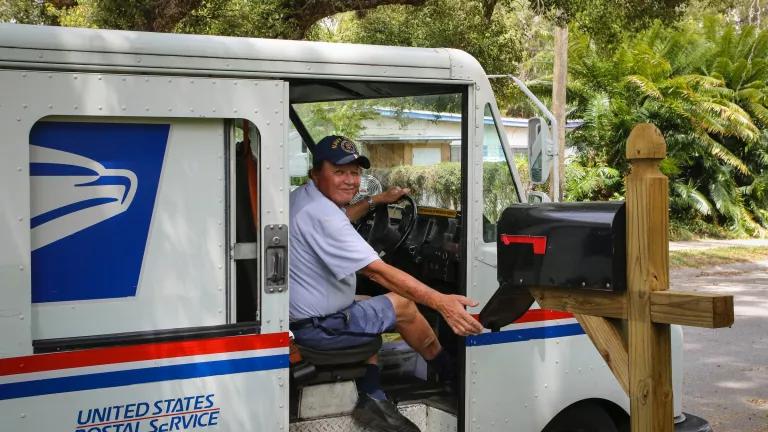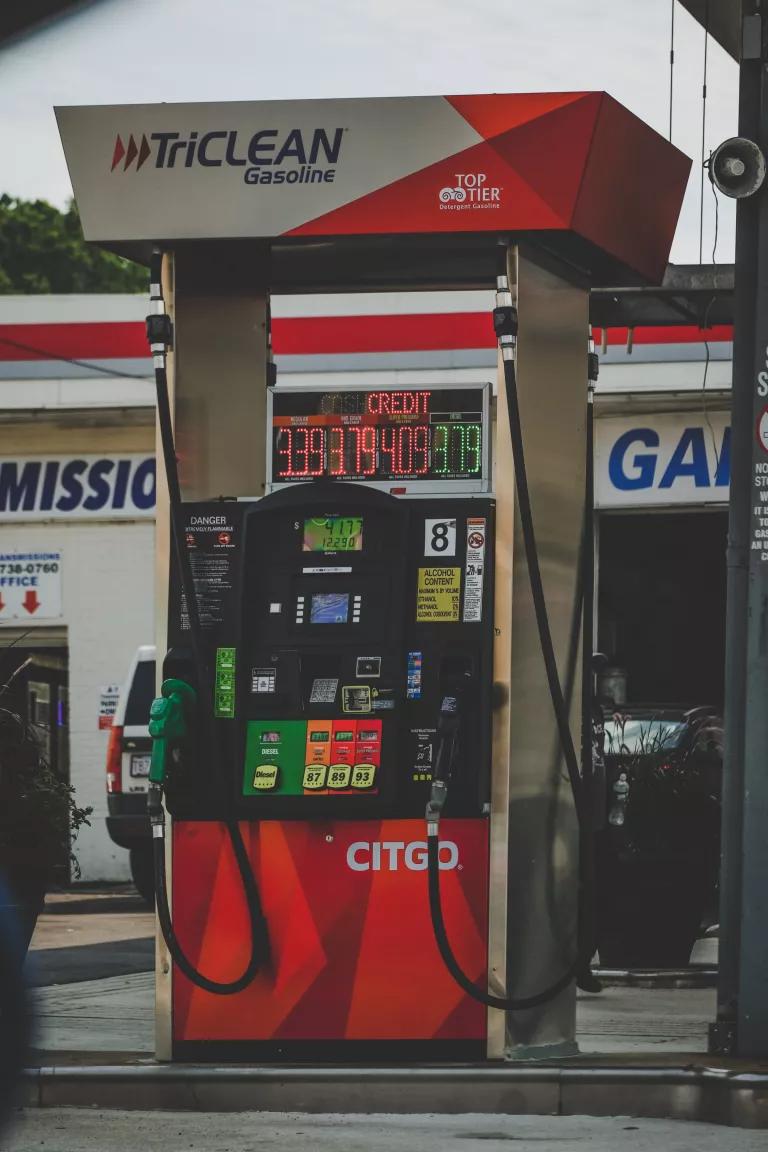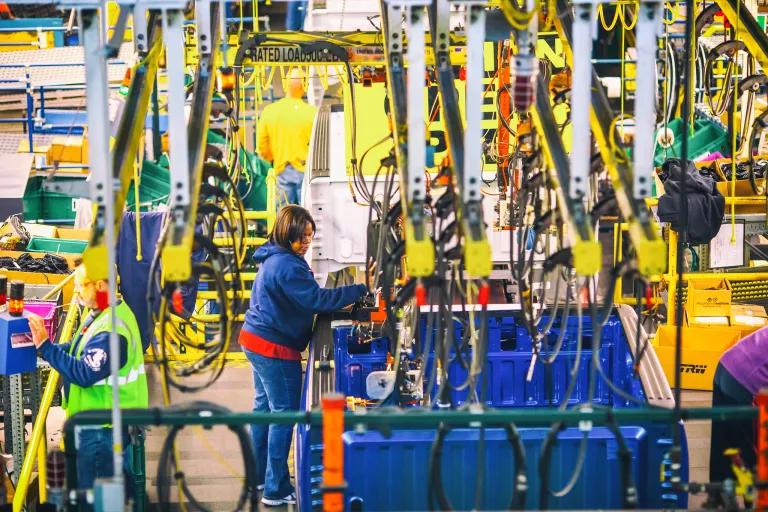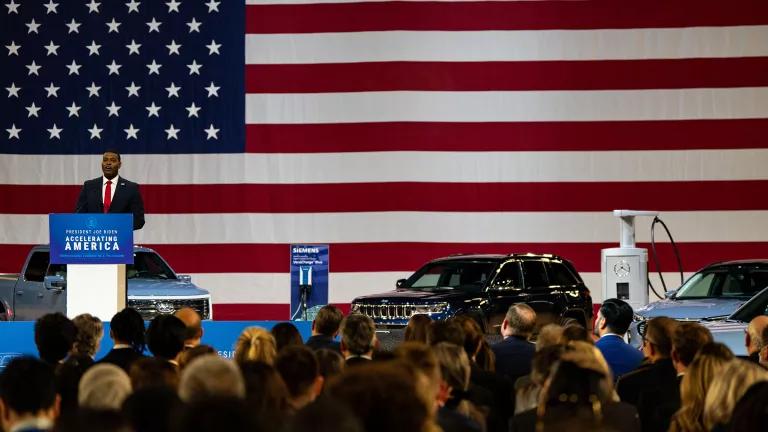Time to Stamp Out Dirty Trucks at the Post Office
The Postal Service's disastrous decision to spend billions of dollars on polluting vehicles came from an opaque public process overseen by a Trump-era appointee, a deeply flawed analysis, and a clear bias against electric vehicles.

Photo by Mick Haupt on Unsplash
UPDATE: On April 28, 2022, NRDC and the UAW sued Postmaster General Louis DeJoy and the USPS over its review and decision. A new review will give the USPS the accurate information it needs to make an informed decision on what new delivery vehicles, including EVs, it should purchase, and where and how the postal service should assemble the new delivery vehicles. The case is currently pending in federal district court in New York.
One of the most iconic images in America is that of a postal truck. With its steering wheel on the right-hand side and steadfast drivers going door-to-door—rain or shine—to deliver our messages, gifts, and goods. The Postal Service is entrusted with keeping us all connected and postal trucks help make that happen.
But sadly, the women and men making their way through our neighborhoods do so in 30-year-old polluting trucks that lack air conditioning and standard safety features. After decades of neglect, the Postal Service leadership has decided to spend as much as $11.3 billion to upgrade its fleet of delivery trucks over the next ten years. But instead of investing in a cleaner future they are doubling down on the dirty past.
Of the 165,000 new trucks the Postal Service plans to buy, 90% are expected to be excessively polluting, low fuel economy vehicles that burn gasoline instead of clean electric vehicles. This proposed contract will lock in increasingly outdated technology, cost billions of dollars in additional fuel and maintenance expenses, pump pollution into the atmosphere that contributes to the climate crisis, and guarantee that future generations in every neighborhood breathe air pollution from a postal truck’s tailpipe. The remaining 10% would be electric vehicles, but you have to squint through the smog to see them.
An Opaque Process with Biased Results
A disregard for transparency has plagued the entire process. It’s worth noting that the Postal Service selected a contractor and awarded close to $500 million to begin engineering and factory construction for the new delivery vehicles before the public could even comment on the largest purchase decision in its history. Only after it made this decision did the Postal Service issue its environmental impact analysis, which explains the twisted logic, flawed analysis, non-transparent data, and non-responsiveness reflected in the final document. That’s not how this process can or should work. Soliciting public feedback isn’t just a check-the-box activity. Producing a biased environmental assessment and committing resources before making a final decision violates federal requirements in the landmark National Environmental Policy Act.
A Proposal Filled with Mistakes
Bizarrely, the Postal Service’s environmental analysis informing the purchase decision contradicts the best available data, shrugs off the over 37,000 public comments it received, and ignores the billions of dollars in savings from buying electric vehicles. The proposal is filled with inaccuracies, including dramatically underestimating emissions from the new gas trucks and overestimating emissions from electric vehicles, resulting in indefensible conclusions.
The Postal Service analysis complements blatant mistakes with irrational decision-making. For example, the Postal Service expects its gas trucks of the future to get 8.6 miles per gallon (with the air conditioning on), an imperceptible (5%) increase over the 8.2 miles per gallon the fleet of 30-year-old trucks gets. Worse still, when the current fleet rolled off the assembly line in 1988, it had a combined city and highway average fuel efficiency of 17 miles per gallon (time and use can reduce efficiency). Such inefficient new vehicles will burn billions of dollars more in fuel and spew 20 million metric tons of carbon dioxide equivalent pollution over a 20-year lifetime, costing over $900 million in climate damages according to EPA’s analysis. The Postal Service’s own estimates show the new fleet consuming an additional 109,770,855 gallons of gasoline annually than if they were all electric. The result is nearly double the greenhouse gas emissions and, in some cases, triple the amount of air pollution.
Emission Comparison Adapted from the Final Environmental Impact Statement

Hidden and Deficient Data
Aside from miscalculating emission reductions and disregarding critical benefits, the proposal improperly estimates costs and fails to produce most of the underlying data.
The Postal Service justifies its decision by pointing to costs, claiming that this is the best and only option given the agency’s dire finances. Yet, when commenters, including NRDC and thousands of its members, explained in great detail how EVs would save the agency money over the lifetime of the vehicle, the Postal Service replied with a dismissive wave:
USPS: “[Our decision] is the result of a multi-year extensive prototype evaluation, involving an estimated 450,000 manhours dedicated to purpose-built prototypes, twelve testing protocols (e.g., field testing, durability testing, component testing, carrier testing, fuel economy, and efficiency testing) at a total cost of more than $50 million.”
Great, can you share the data?
USPS: “[T]he Postal Service [] declines to disclose commercially-sensitive data.”
The USPS is keeping secret its data that purports to show gas vehicles are a cheaper option. But study after study shows that electric delivery vehicles are cost-competitive, and the technology is ready today. In fact, one study found that the USPS would save $4.3 billion if it electrified its fleet. The potential fuel and maintenance savings from electric vehicles isn’t lost on the rest of the delivery industry. Amazon, UPS, FedEx, and DHL have all made significant investments and commitments to electrify their fleets.
So what exactly is in this secret “commercially-sensitive data?” The little that was shared with Americans suggests widespread mistakes. For example, the Postal Service relied on an outdated national average gas price of $2.19 per gallon that would rise gently to $2.50 per gallon by 2040. Yet, six months before the proposal was released for review, the national average hit $2.80 per gallon. Have you been to a gas station lately? The average national retail gas price is around $3.40 per gallon today. Does anyone truly think the average price for gasoline in 2040 will be $2.50 per gallon? That’s what the Postal Service wants you to believe, to justify its fatally flawed analysis.

Photo by Yassine Khalfalli on Unsplash
This speaks to a wider problem that pervades the Postal Service analysis: lack of granularity. Tellingly, this occurs frequently on the electric vehicle side, demonstrating inherent biases and misunderstandings about electric vehicle technology. For instance, the Postal Service claims that the cost of installing charging infrastructure is a key reason to limit the number of EVs, predicting they “would require more than $1 billion in additional investment due to…infrastructure costs.” However, the agency acknowledges that “[s]pecific Postal Service facility locations where new vehicles would be deployed and where alterations may be needed are not known at this time” and instead randomly selected three locations from which to derive cost estimates. The cost of installing charging infrastructure is largely location-specific, and depends on the existing distribution system, the number of desired charging stations, supportive utility programs, and local permitting processes. Without evaluating where electric vehicles would operate or which facilities need to be altered, the agency cannot accurately determine if charging infrastructure is cost-prohibitive.
The Postal Service knows when, where, and how its fleet of delivery trucks operates, so why didn’t it take a deeper look into how the new vehicles could be deployed to save money, reduce emissions, and benefit communities? Because it had made up its mind to buy the dirtier vehicles, and that deeper look would have contradicted the predetermined outcome. At a minimum, you’d expect an agency preoccupied with cost to do a distributional analysis for how its new delivery vehicles can maximize savings.
No Consideration for Workers or Communities
The analysis also fails to give any serious consideration to the impact that tens of thousands of new gas-burning vehicles will have on communities suffering from air pollution. Across the country, those disproportionately suffering from transportation air pollution are communities of color and low-income communities. Urban areas continue to suffer unsafe levels of smog. Unfortunately, the Postal Service's current decision will exacerbate air quality inequities rather than seize the opportunity to help alleviate air pollution by strategically deploying clean electric vehicles.
Equally alarming and ignored in the analysis is the contract awardee’s—Oshkosh Defense, best known for building military equipment—intention to relocate from its traditional base in Wisconsin to another state to avoid a collective bargaining agreement with its workers. But setting aside the importance of supporting high-quality jobs, the Postal Service’s failure to account for the socioeconomic impact and workplace conditions of manufacturing in a different state is a significant analytical deficiency that will hurt workers.

Photo by Thomas Hawk on Flickr
The Postal Service Must Revise the Proposal
As a kid, I remember waiting eagerly by the window for the mail carrier to pass by with a letter or a friendly smile and wave. It’s exciting to imagine that this delivery could arrive in a quiet and clean EV for future generations. But unfortunately, an opaque public process overseen by a Trump-era appointee, a deeply flawed analysis, and a clear bias against electric vehicles spoil that possibility. Although the postal fleet desperately needs an upgrade, it would be better to take the time to get this once-in-a-generation investment right rather than force through a plan that will cost billions and unnecessarily increase pollution.
If that takes a bit longer, the Postal Service can continue replacing vehicles with commercial, off-the-shelf vehicles. This is standard practice, and the Postal Service currently operates 57,000 of them.
In the meantime, the Postal Service must, at a minimum, provide supplemental information on its decision and incorporate public feedback to improve its purchase proposal. The women and men delivering our mail deserve better, the environment deserves better, and our communities deserve better.

Cropped photo by Travis Wise on Flickr



